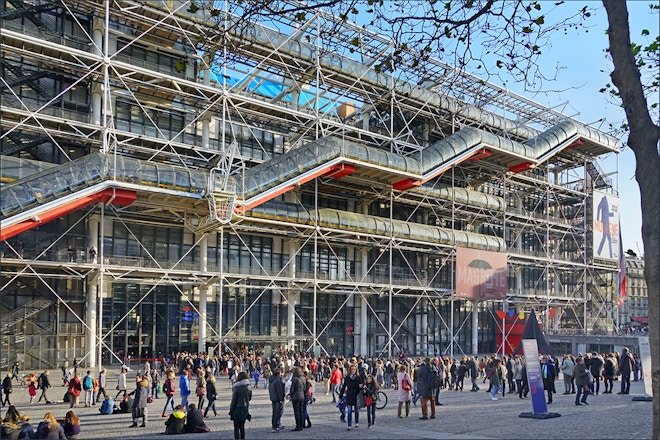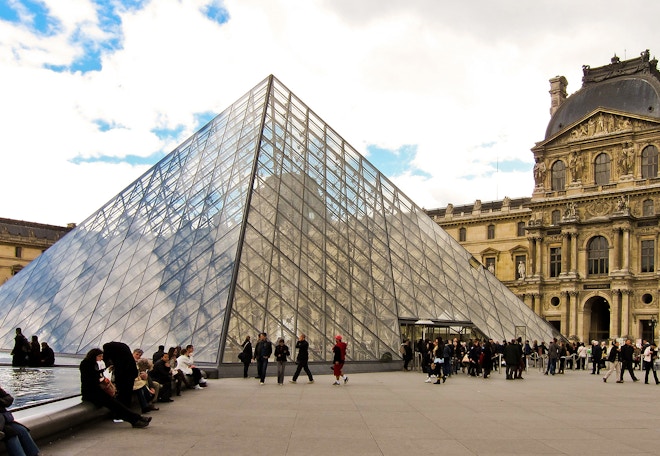
Remembering Peter Rice

I’ve drawn inspiration from diverse sources in my career, but one of the most valued of these is the work and words of Peter Ronan Rice, the brilliant Irish engineer. Rice stands among humanities greatest engineers of all time, a natural engineer and creative problem solver. Working with Arup alongside trailblazing architects like Richard Rogers and Renzo Piano, he recognized and embraced the creative potential of the engineer-as-designer, playing a central role in a string of truly iconic buildings, including the Sydney Opera House, the Centre Pompidou, Lloyd’s of London, and the Glass Walls at la Villette. He started his career with Arup & Partners, working with Jørn Utzon on the shell structures that comprise the roof of the Sydney Opera House, ultimately spending seven years working on the realization of this landmark building.
Rice’s empathy for and talent in creative expression was amplified by his deep understanding of and respect for materials and processes, “…the most powerful way that an engineer can contribute to the work of architects is by exploring the nature of the materials and using that knowledge to produce a special quality in the way materials are used,” he claimed. This is evident in his work with Rogers and Piano on the Centre Pompidou. As part of the winning team with Arup in the French government competition, he went on to become the central figure on the design team. The exposed structural system displays his talent for blending art and technology to yield novel solutions to challenging problems. The gerberettes—massive steel castings—are elegant as individual components, and the story of their development and production reveals how experiment and innovation can be successfully incorporated in a building project to spectacular effect. Rice tells that story, and many others, in a fascinating autobiographical book, An Engineer Imagines, originally published posthumously in 1994, and just republished in 2017. “The search for the authentic character of a material,” he says, “is at the heart of any approach to engineering design.”
Rice found his own inspiration in the concrete work of bridge engineer Maillart, the steel work of Brunel, the iron work of Telford and Eiffel, and the structures they produced using these materials. “In any of these structures there is a simple honesty which goes straight to the heart of the physical characteristics of the material and expresses them in an uninhibited way,” Rice comments. Another that he admired and references as a model of the natural engineer was a contemporary, Jean Prouvé; “…he was one of the great natural engineers of the middle years of the twentieth century, untutored, unconventional, a maverick engineer and architectural inventor, whose understanding of materials and process [enabled him] to do things that a more conventional engineer would have found impossible.”

Tragically, Rice’s work was cut short by a fatal brain tumor in 1992 in his 57th year. An Engineer Imagines reads as his parting gift to humanity and the “natural engineers” among and within us, a book rich in design wisdom and insights into the creative process. The book was an inspiration to me after starting a design-build firm in the early 1990s aimed at implementing high-transparency facade technology—cable structures, grid shells, point-fixed glazing systems—in the U.S. marketplace. It taught me to root design development and creative problem solving in a rich loam of material understanding and exploration, striving for an authentic expression of that material in the context of the problem at hand. The Glass Walls at la Villette are the seminal work in this genre, as documented in another Rice book co-authored with Hugh Dutton, Structural Glass. This book is more technical, less philosophical in approach, but a fascinating read for anyone interested in structural glass facades. While still working with Arup, Rice founded the highly innovative design engineering firm Rice Francis Ritchie (RFR) with industrial and yacht designer Martin Francis and architect Ian Ritchie. The firm was ultimately responsible for the implementation of many novel structures and building envelopes worldwide, including the iconic Louvre Pyramid.
Arup produced a 30-minute gem of a documentary film about Rice in 2012 that can be viewed on YouTube.

Mic Patterson, PhD, LEED AP BD+C
Ambassador of Innovation and Collaboration
Facade Tectonics Institute
Send Email
Mic Patterson is a designer, researcher, educator, futurist, author, photographer and entrepreneur. He has concentrated his professional and academic career on advanced facade technology and sustainable building practices. He pioneered the introduction of structural glass facade technology in the United States in the 1990s, implementing diverse and novel applications including cable trusses, cable nets and grid shells. Patterson was among the founding group of the Advanced Technology Studio of Enclos, where he works as the Vice President of Strategic Development. He is a co-founder of the Facade Tectonics Institute and serves on the steering committee, and co-founder of the Facades+ conference series. He is on the technical research committee for GlassCon Global and a member of the Advisor Group for the Council for Tall Buildings and Urban Habitat. He has twice been named among the industry’s most influential by US Glass magazine. Patterson is a Ph.D. candidate in the School of Architecture at the University of Southern California with a research focus on sustainable facade renovation practices. He has taught, written extensively, and lectured internationally on diverse aspects of advanced facade technology. He is the author of Structural Glass Facades and Enclosures, published by Wiley.
Publisher’s note: The views expressed here are those of the author, and do not necessarily reflect those of, nor are they endorsed by, the Facade Tectonics Institute.
Looking for something specific?
Search our extensive library.
FTI’s SKINS email is the central source for the latest in building skin trends and research.
All emails include an unsubscribe link. You may opt out at any time. See our privacy policy.








